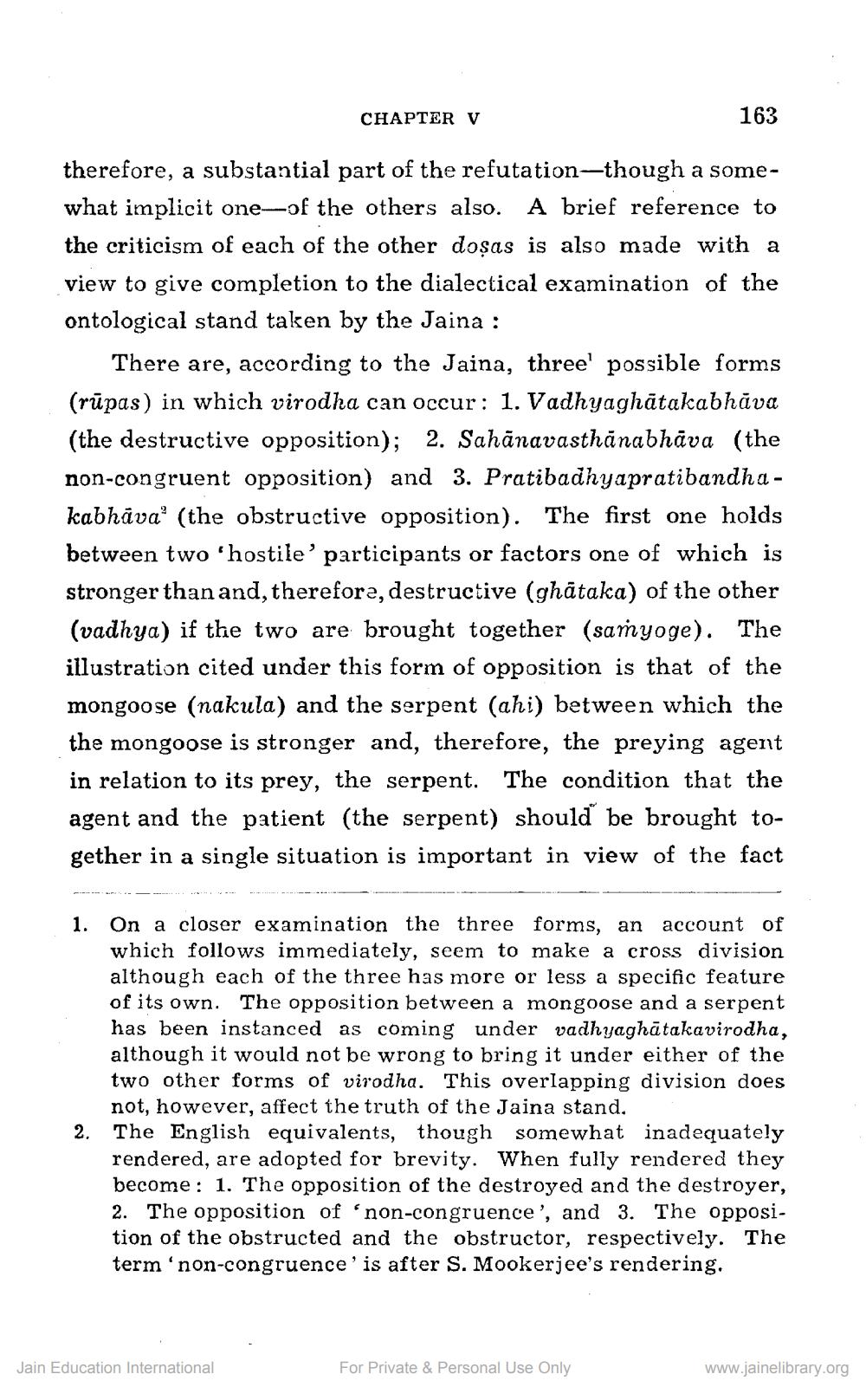________________
CHAPTER V
163
therefore, a substantial part of the refutation-though a somewhat implicit one-of the others also. A brief reference to the criticism of each of the other dosas is also made with a view to give completion to the dialectical examination of the ontological stand taken by the Jaina :
There are, according to the Jaina, three' possible forms (rūpas) in which virodha can occur: 1. Vadhyaghātakabhāva (the destructive opposition); 2. Sahānavasthānabhāva (the non-congruent opposition) and 3. Pratibadhyapratibandhakabhāva' (the obstructive opposition). The first one holds between two 'hostile' participants or factors one of which is stronger than and, therefore, destructive (ghātaka) of the other (vadhya) if the two are brought together (samyoge). The illustration cited under this form of opposition is that of the mongoose (nakula) and the serpent (ahi) between which the the mongoose is stronger and, therefore, the preying agent in relation to its prey, the serpent. The condition that the agent and the patient (the serpent) should be brought together in a single situation is important in view of the fact
1. On a closer examination the three forms, an account of
which follows immediately, seem to make a cross division although each of the three has more or less a specific feature of its own. The opposition between a mongoose and a serpent has been instanced as coming under vadhyaghātakavirodha, although it would not be wrong to bring it under either of the two other forms of virodha. This overlapping division does
not, however, affect the truth of the Jaina stand, 2. The English equivalents, though somewhat inadequately
rendered, are adopted for brevity. When fully rendered they become: 1. The opposition of the destroyed and the destroyer, 2. The opposition of non-congruence', and 3. The opposition of the obstructed and the obstructor, respectively. The term 'non-congruence'is after S. Mookerjee's rendering.
Jain Education International
For Private & Personal Use Only
www.jainelibrary.org




